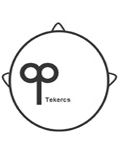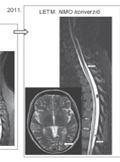The eLitMed.hu medical portal uses computer cookies for convenient operation. Detailed information can be found in the Cookie-policy.
Clinical Neuroscience - 2012;65(05-06)
Content
[Non-invasive brain stimulation for relieving acute and chronic pain]
[Controlling pain has always been one of the biggest challenges of medical science. Despite pharmacological developments, still many patients suffer from long-lasting pain. During the last 40 years several surgical interventions have been used to modulate the activity of the central nervous system in order to control chronic, pharmacoresistant pain. Because such interventions may involve very serious adverse events, safer and at least equally efficient methods are still required. In the 90’s new techniques of non-invasive brain stimulation have been introduced that enable the facilitation or inhibition of distinct cortical areas. These methods are based on the electrical stimulation of brain structures and to date they have been successfully used to modulate perceptual, cognitive and motor functions in healthy subjects and various diseases as well. In this review we describe such techniques of non-invasive brain stimulation, namely repeated transcranial magnetic stimulation and transcranial direct current stimulation and review the current literature about their efficacy in controlling acute and chronic pain.]
[Prognostic factors of primary spinal tumors]
[Aims - Primary spinal tumors are rare diseases and there are less objective data in the international literature. We analyzed the epidemiology and clinical consequences of primary spinal tumors based on the clinical experience of the National Center for Spinal Disorders. Methods - Demographic and clinical data of 300 patients treated in our institute between 1995 and 2007 was collected retrospectively and analysed. Results - Beyond the relatively more frequent pathologies (chordoma, myeloma multiplex) we treated in our hospital some of the very rare types of tumors (spinal leiomyosarcoma, synovial sarcoma). Primary spinal tumors are most often located in the lumbosacral region causing most frequently (73%) local or radiating pain. Modern therapy of these patologies is based on the surgical intervention. Mean operation time was 130 minutes, mean blood loss was 650 ml in our pratice during these often technically challenging surgeries. We found a significant association among the operation time, the blood loss and the extension of the tumor (p<0.01). Histology (p<0.0001), severity of symptomes (p<0.05) and blood loss (p<0.05) were significantly related to mortality. Local recurrence was more than 5-fold in case of patients previously operated in another institute (p<0.0001). Conclusions - We successfully determined some significant prognostic factor on clinical behavior of primary spinal tumors performing a large scale retrospective study. Long time follow up of the patients and completion of our database with prospective data are planned for the future.]
[New minimal invasive surgical techniques in spine surgery]
[The last decade has brought significant development in spine surgery. As in all field of surgery, introduction of the minimal invasive, atraumatic procedures characterized our activities. The number of short and long-time complications were significantly reduced and the effectiveness of operations were markedly improved by the new technical conditions, for example by the use of neuronavigation, surgical microscope, intraoperative fluoroscopy, high speed drill and the widespread of keyhole concept. The applied multislice CT imaging and the high resolution MRI enabled to improve the accuracy of the planned surgical procedures and to reduce the mortality and morbidity of operations. In our studies technical methods were investigated and new developments were established in the field of minimal invasive spine surgery. The National Institute of Neurosurgery's spinal surgical team pioneers further development and application of novel minimal invasive procedures. Applied methods of vanguard surgical procedures include split laminotomy, the “archbone” technique, the “over the top” decompression, the multilevel hemi-semi laminectomy, the supraforaminal “burr hole”, the facet joint sparing “open tunnel” techniques or parasplit minimal invasive approaches. The new innovative surgical techniques are applied in our daily routine and meet international trends by utilizing benefits of minimal invasive spinal surgery. Using our newly developed innovative techniques allow to decompress neural elements in case of spinal canal stenosis and to remove the intramedullary and extramedullary space-occupying lesions located in the spinal canal and spreading extraspinally through the neuroforamen. These techniques are specially tailored to preserve structural integrity and stability of the spinal column, and allow at the same time to minimize resection of and injury to tissues not directly involved in the pathologic processes. In our studies a classification system of spatial localization of pathological lesions and processes in spinal canal was developed by us. Using this classification system enables the surgeon to select and apply the appropriate minimal invasive technique from dorsal direction and to remove the space-occupying lesions located in the spinal canal. The minimal invasive techniques were characterized and summarized. This overview of the minimal invasive techniques can be applied and recommended in the daily routine of spine surgery. We proudly employ novel surgical techniques having been developed in our institution. These techniques are internationally recognized and applied in our practice on daily basis as well.]
[Effect of two month positive airway pressure therapy on the structure of sleep, cognitive function and anxiety]
[Obstructive sleep apnea is a common disorder, characterized by repeated episodes of upper airway obstruction during sleep, resulting intermittent hypoxia and disruption of the normal sleep pattern, which caused cognitive dysfunction in these patients. Nasal continuous positive airway pressure is the treatment of choice for this disorder. The aim of the study is to evaluate the effect of short-term positive airway pressure on sleep pattern (polisomnographic measures), cognitive function and anxiety. Twenty four newly diagnosed and previously untreated patients with obstructive sleep apnea were evaluated a battery of neuropsychological tests before and after 2 and a half months of the treatment. We focused on working memory, short and long-term episodic memory, executive functions, anxiety and subjective sleepiness. Our results showed that the two and half month of treatment improved the respiration during sleep, sleep pattern and the subjective sleepiness. We found improvement in short- and long-term verbal memory, and complex working memory. Despite of treatment we did not find improvement in visuospatial learning. These results reveal that 2 and a half months of positive airway pressure treatment restored not only the normal respiration during sleep and normal sleep pattern, but also the cognitive functions. Our study suggests that cognitive dysfunction is at least partial reversible in obstructive sleep apnea patients after positive airway pressure treatment.]
[Acute and chronic stress induced changes in gene transcriptions related to Alzheimer’s disease]
[Preclinical and clinical studies demonstrate that stress may be implicated in the risk of neurodegenerative diseases such as Alzheimer’s disease (AD). Our study aimed to investigate the effects of acute and chronic immobilization stress (IS) on the gene transcriptions of β-actin, amyloid precursor protein (APP) and mitogen activated protein kinase-1 (MAPK-1), proteins related to synaptic plasticity and neuronal degeneration. Male Wistar rats were exposed to IS for five hours daily for 3 days (acute stress) or through 7-14-21 days (chronic stress). At the end of exposure periods, total RNA was purified from the cortex and hippocampus. The amounts of β-actin, APP and MAPK-1 mRNA were determined with real time PCR method. Our results indicate that the mRNA expression of β-actin and APP followed a U-shaped time-response curve. Both acute and chronic IS caused a significant increase in β-actin and MAPK-1 mRNA expression. Significant APP mRNA elevation was observed only by the 3rd week after RS. Our findings demonstrate that both acute and chronic IS lead to gene transcriptional changes of β-actin, APP and MAPK-1. These proteins maintain the normal function of the cytoskeleton and the synaptic plasticity. The above changes may lead to cognitive deterioration, and the development of AD.]
[European treatment recommendation of neuromyelitis optica spectrum disorders: critical remarks and case discussion]
[Neuromyelitis optica is a demyelinating disease of the central nervous system mediated by antibodies against the waterchannel aquaporin4 (AQP4). In a number of cases the clinical manifestation is spatially limited. Such events of separate longitudinally extensive transverse myelitis (LETM) or relapsing/bilateral optic neuritis (RION/BON) are defined as NMO spectrum diseases. The diagnosis is further challenged by anti-AQP4 seronegative cases. While chronic immunosuppressive therapy should be introduced in definitive NMO, treatment strategy of the NMO spectrum is less defined. Recent EFNS guidelines recommend chronic immunosuppressive treatment of NMO spectrum diseases depending on the clinical course even in AQP4-seropositive cases. Presenting a case with relapsing optic neuritis, here we emphasize the importance of early immunosuppressive therapy in all seropositive NMO spectrum diseases regardless of relapse severity, in order to prevent an upcoming devastating relapse, i.e. NMO conversion.]
[About the neuropathic component of back pain]
[About the neuropathic component of back pain 2012;65(05-06)]
1.
Clinical Neuroscience
[Headache registry in Szeged: Experiences regarding to migraine patients]2.
Clinical Neuroscience
[The new target population of stroke awareness campaign: Kindergarten students ]3.
Clinical Neuroscience
Is there any difference in mortality rates of atrial fibrillation detected before or after ischemic stroke?4.
Clinical Neuroscience
Factors influencing the level of stigma in Parkinson’s disease in western Turkey5.
Clinical Neuroscience
[The effects of demographic and clinical factors on the severity of poststroke aphasia]1.
2.
Clinical Oncology
[Pancreatic cancer: ESMO Clinical Practice Guideline for diagnosis, treatment and follow-up]3.
Clinical Oncology
[Pharmacovigilance landscape – Lessons from the past and opportunities for future]4.
5.












